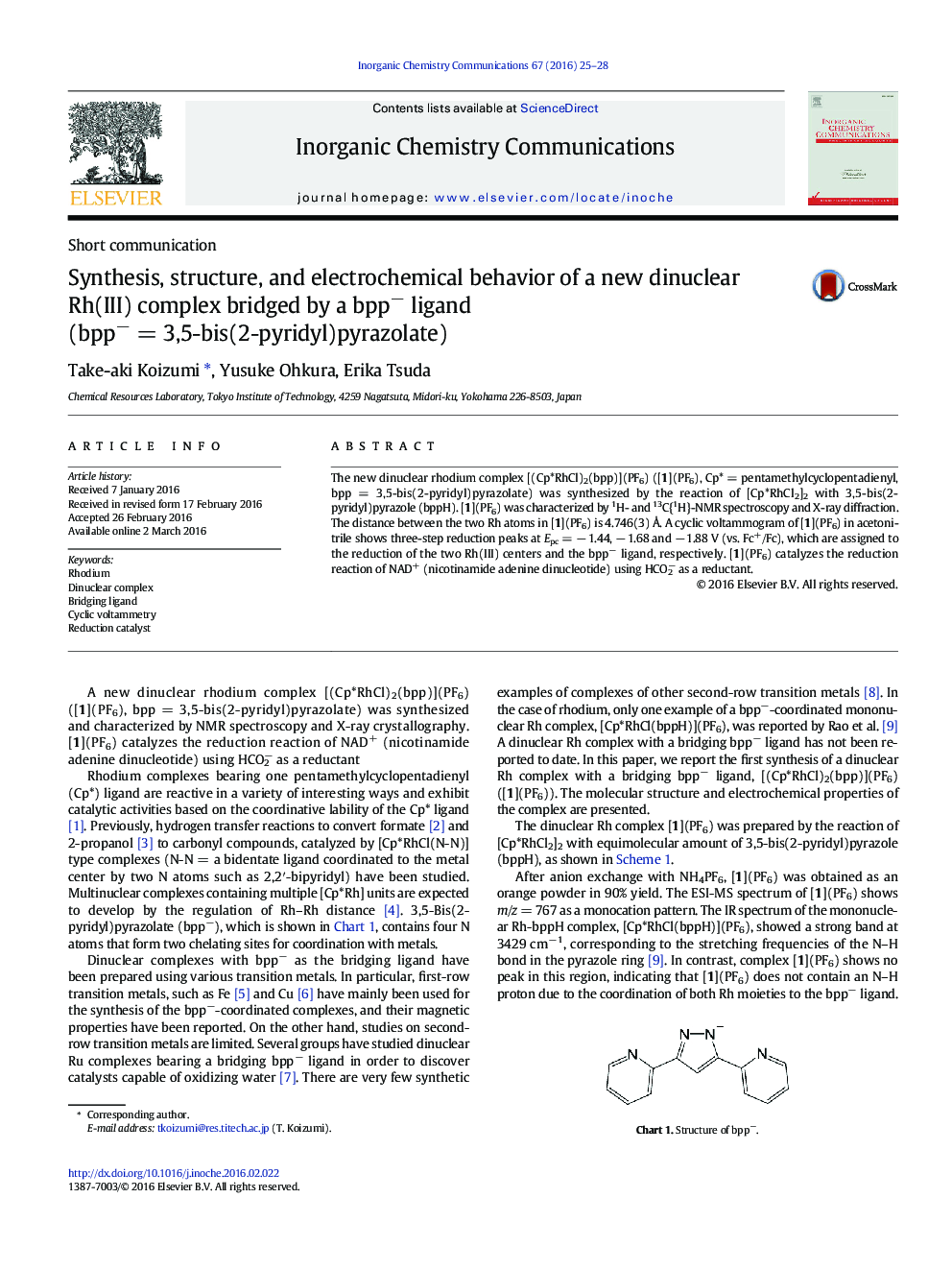| Article ID | Journal | Published Year | Pages | File Type |
|---|---|---|---|---|
| 1303200 | Inorganic Chemistry Communications | 2016 | 4 Pages |
•A new dinuclear Rh–Rh complex bearing bridged bpp− ligand was synthesized.•The complex shows two-step reduction waves owing to the reduction of two Rh metals.•The complex catalyzes the reduction of NAD+ using formate as a reductant in MeOH–H2O.
The new dinuclear rhodium complex [(Cp*RhCl)2(bpp)](PF6) ([1](PF6), Cp* = pentamethylcyclopentadienyl, bpp = 3,5-bis(2-pyridyl)pyrazolate) was synthesized by the reaction of [Cp*RhCl2]2 with 3,5-bis(2-pyridyl)pyrazole (bppH). [1](PF6) was characterized by 1H- and 13C{1H}-NMR spectroscopy and X-ray diffraction. The distance between the two Rh atoms in [1](PF6) is 4.746(3) Å. A cyclic voltammogram of [1](PF6) in acetonitrile shows three-step reduction peaks at Epc = − 1.44, − 1.68 and − 1.88 V (vs. Fc+/Fc), which are assigned to the reduction of the two Rh(III) centers and the bpp− ligand, respectively. [1](PF6) catalyzes the reduction reaction of NAD+ (nicotinamide adenine dinucleotide) using HCO2− as a reductant.
Graphical abstractFigure optionsDownload full-size imageDownload as PowerPoint slide
